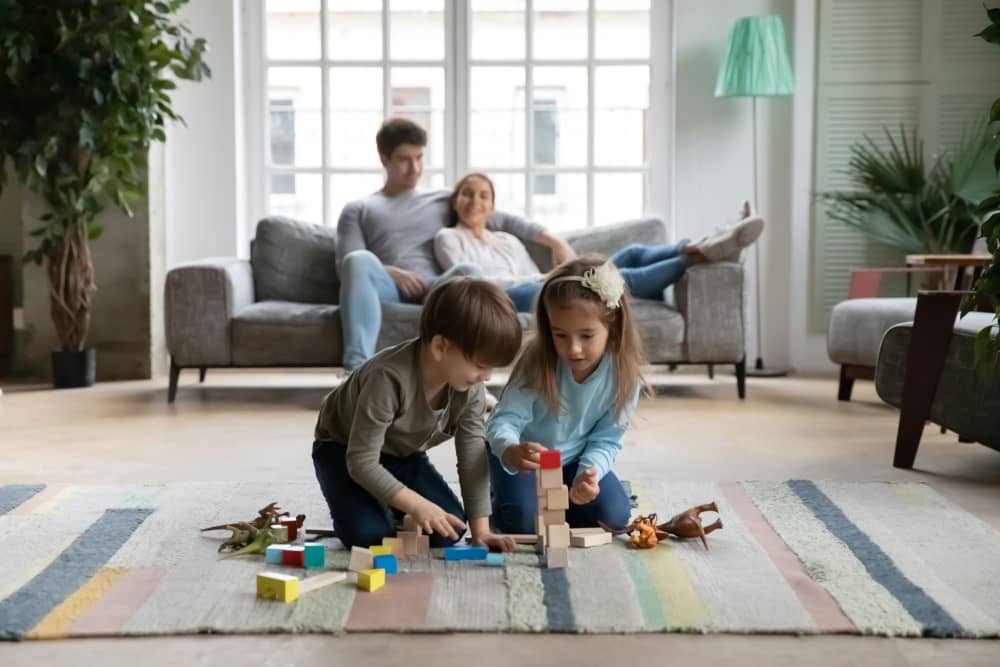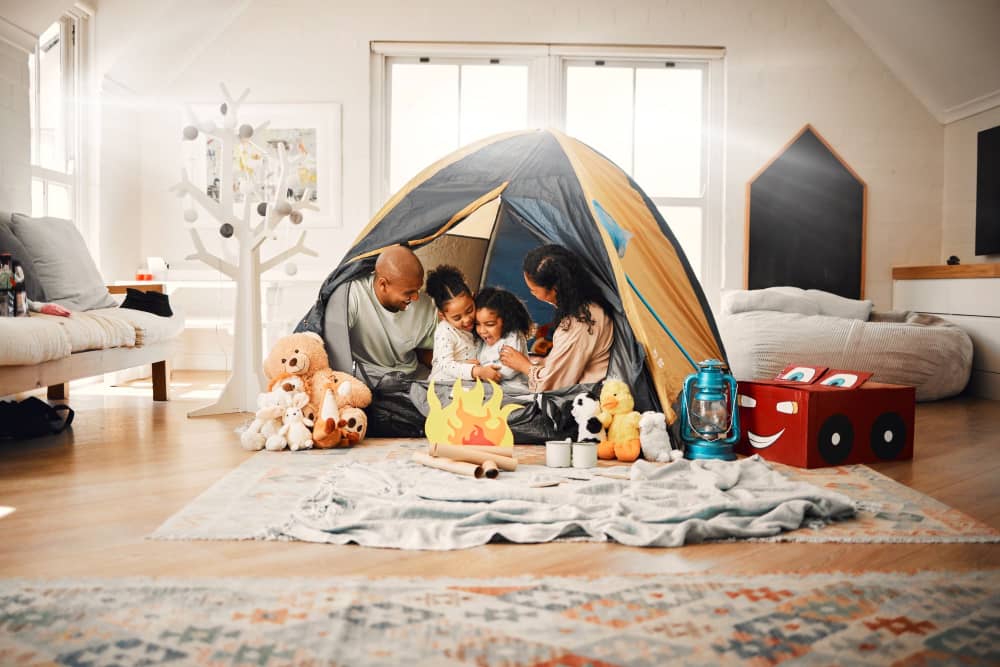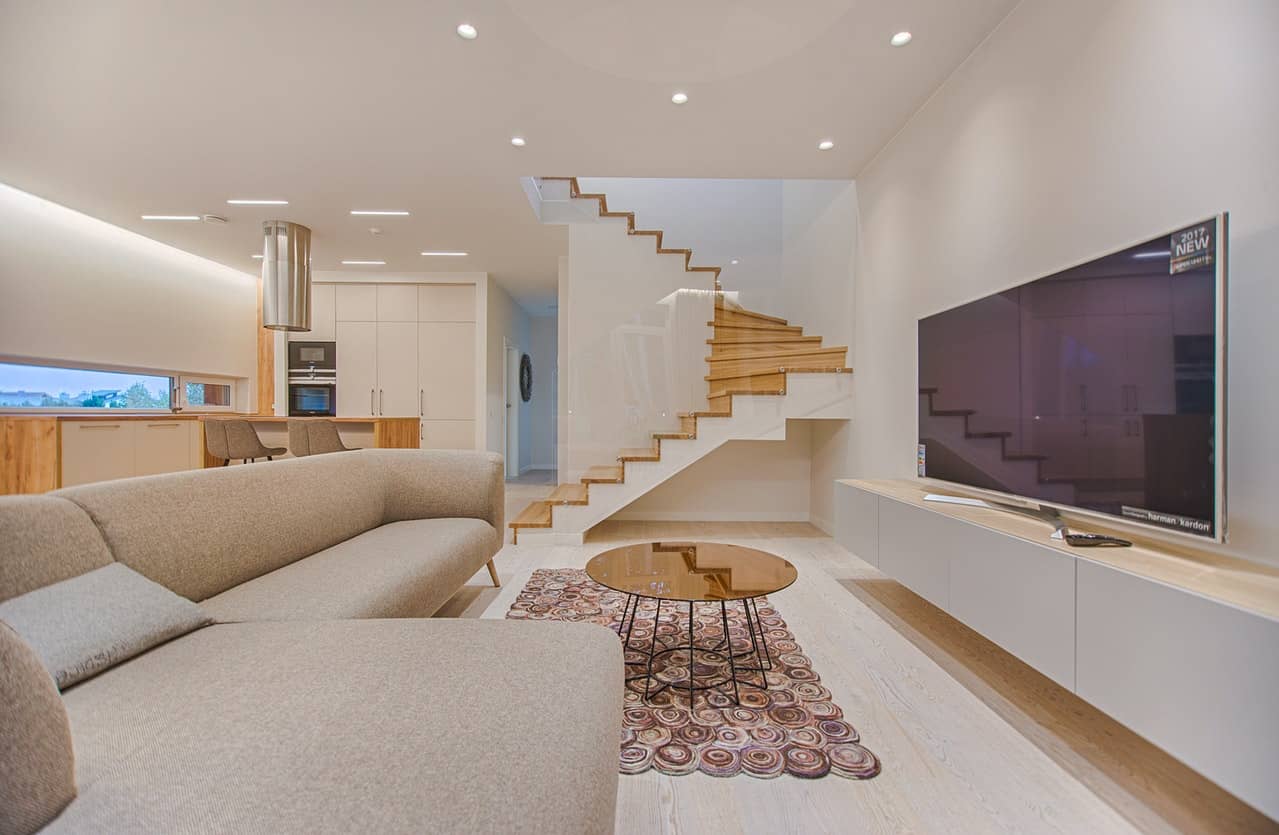Your living room acts as a focal point for activity and entertainment. It’s where your family gathers, stories unfold, and memories take shape. When you have children, designing this space requires special attention.
Those sharp-edged tables and immaculate white couches? Perhaps it’s time for a rethink. You aim for a living room that flawlessly blends style with child-friendly features.
Excited? Designing a family-centric living room doesn’t mean giving up on elegance. By choosing the right furniture, planning smart layouts, and injecting some creativity, you can craft a space perfect for adults and kids alike.

- Choose Safety-Conscious Furniture That’s Stylish
Aesthetics matter, but when children are involved, safety tops the list. Opt for living room furniture designs that sit low to the ground, reducing the risks of tumbles. Contemporary furniture often embraces rounded edges, which look chic and minimize injury potential.
If glass elements catch your eye, always select tempered variations they’re both robust and safe. Tufted ottomans can serve as excellent alternatives to standard coffee tables. They’re free of sharp corners and double up as added seating or a footrest. The choice of material also plays a crucial role.
Furniture crafted from rubberwood or eucalyptus is renowned for its resilience and sustainability. Achieving a balance between safety and elegance is your ultimate objective.
- Opt For Durable And Washable Fabrics
With kids around, messes are inevitable. So, choose resilient materials to stand up to the challenge. Consider leather, microfiber, or other durable fabrics for your seating options.
But don’t stop at the sofa. Your choice of fabric for curtains, throw pillows, and other elements is equally vital. Previously exclusive to patio furnishings, outdoor fabrics have found their way indoors. These materials, engineered to resist the elements, are unexpectedly soft and feature a variety of patterns and hues, making them family-friendly.
It’s also wise to invest in stain-resistant treatments for added protection. As for those detachable, washable slipcovers? They become your best friend, offering an effortless cleaning solution and an opportunity for a periodic style update without straining your wallet.
- Design A Flexible Layout For Varied Activities
Your living room takes on multiple roles. For children, it’s a playground; for adults, a sanctuary. An adaptable layout with movable furniture pieces ensures effortless role reversals.
Instead of erecting walls, use open shelving or tall plants to demarcate different sections subtly. Create ‘activity pockets’ specific reading, gaming, or crafting areas that can be swiftly arranged or disassembled.
Introducing elements like mobile trolleys or rolling carts aids in smooth transitions between activities. Strategically placing furniture in distinct zones or employing a ‘floating’ arrangement further enhances the room’s flexibility, readying it for any occasion.
- Incorporate Strategic Storage Solutions
Toys, books, and games come in tow with children. Innovative storage solutions are essential to prevent these items from overwhelming your space. How about ottomans that double up as storage units? Or coffee tables with concealed compartments?
Stylish shelves or modern cubbies can house children’s items, swiftly transforming a chaotic play area into a sleek entertainment zone. Wall-mounted pegboards or magnetic boards are perfect for showcasing children’s art or educational tools. If you’re inclined towards DIY, repurposing old trunks into chic storage coffee tables injects personality and functionality.
- Invest In Rugs That Can Handle The Action
For kids, floors are more than just surfaces they’re playing arenas. When choosing a rug, opt for durability. Tough materials like wool or sturdy synthetics fit the bill. And by selecting patterned or darker shades, you’re playing it smart, hiding those inevitable stains while keeping the room looking sharp.
- Implement Practical And Safe Lighting Solutions
Lighting holds the power to transform a room’s ambiance. While the day bestows natural sunlight, evenings demand diverse lighting options. Install dimmer switches for mood variations at the twist of a knob.
When introducing new lighting fixtures, prioritize safety. Avoid accidents from curious little hands. Blend ambient, task, and accent lighting to suit diverse moods and activities. Rope or LED strip lights under furniture can conjure a whimsical ambiance.
Consider adjustable floor lamps for precise illumination for activities like reading or crafting. Lighting shouldn’t be purely functional it can be decorative too. Experiment with tinted bulbs or uniquely crafted lamps to strike a balance between style and practicality.
- Choose Non-Toxic Materials
Kids experience the world differently through touch, taste, and even bites. Ensure every material in your space is benign. VOC-free paints, natural fiber rugs, and untreated wooden furnishings are a few choices to maintain a toxin-free environment.
When selecting toys or decor, opt for materials like raw wood, organic cotton, or bamboo. These choices safeguard your children and promote sustainable living principles.
- Create Defined Kid Zones

Designate specific spaces for children’s activities to make your living room even more welcoming. Whether it’s a cozy reading corner or a vibrant play section, these zones grant a sense of belonging. Deploy rugs or dividers to integrate seamlessly with the overarching room design.
Interactive features, like chalkboard or whiteboard walls, ignite creativity. Modular play mats or puzzle carpets offer flexibility and can be tucked away as needed. The space isn’t just for play; carve out tranquil spots with bean bags or cushions for reading and relaxation.
- Involve Kids In The Design Process
In shared spaces, everyone deserves a voice. You instill a sense of belonging by allowing your children to contribute their design insights. Their imaginative suggestions might pleasantly surprise you. When they feel a part of the process, they’ll likely treat the space with more care.
Stage a ‘design day’ for everyone to share their concepts. Incorporate some of their choices, ensuring a cohesive design language. Remember, these choices aren’t permanent. Interests shift, so embrace adaptability.
- Decorate With Removable Wall Decals And Art
Children’s interests change as quickly as the weather. Today it’s unicorns; tomorrow, maybe astronauts. With such shifting preferences, permanent décor feels limiting. This is where removable wall decals and art shine.
They allow you to update the décor in sync with your child’s latest fascination. Consider designating a section for their artistic masterpieces it adds a personal touch and celebrates their creativity.
Conclusion
Creating a living room serving adults and kids is about striking the right balance. With careful choices and a touch of ingenuity, you can design a backdrop perfect for joyous moments and warm memories. A functional, safe, and stylish living space awaits. Dive in and design with heart.















